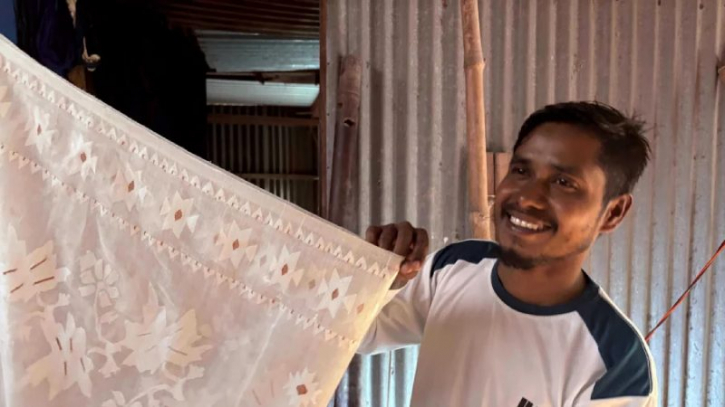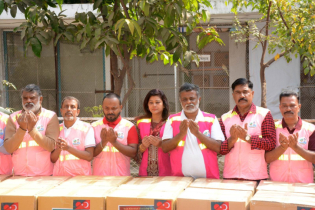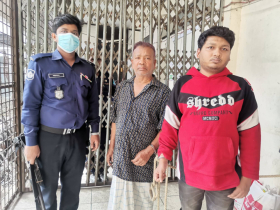
Dhakai Muslin
Even a decade ago, Dhakai Muslin was only for museum exhibits. The tales of the fabric were as bizarre as those that reached mythical status. “A whole muslin saree can go through a single ring worn on the finger,” was one of the prominent tales written in the books.
The history
Muslin, also known as “woven air”, reached the ends of the known world during its height. The fabric was mentioned in the writings of the Greek historian Megasthenes in 400 BC.
The Mughal court patronized the Muslin artisans. Portraits of several Mughal rulers and their wives depicted them attired in Muslin clothes.
When European traders arrived, they realized the high demand for Muslin and began exporting it to their home countries.
By the 17th century, Dhakai Muslin was a highly sought-after commodity in European fashion circles, with the French queen Joséphine de Bonaparte and other aristocrats flaunting Muslin gowns.
During the colonial period, the British Empire saw Muslin as a threat to its textile industry. Thus, it imposed heavy taxation on local weavers and flooded the market with cheaper machine-made garments.
By the late 19th century, the specialized knowledge of Muslin weaving had nearly vanished, and the unique Phuti Karpas cotton species was no longer cultivated.
For the last two centuries, the Muslin had been a myth, with only a few samples remaining in private and museum collections.
However, the tales of Muslin are no longer myths. The Muslin Revival Project, which is in its second phase, has revived the forgotten art of making luxurious fabric.
Jamdani and Muslin revival
Md Iqbal Mia, a weaver from Tarabo, Narayanganj was selected for the training in the first phase of the project.
Iqbal was a generational Jamdani weaver before the Muslin Revival Project was started.
Officers from the Bangladesh Handloom Board selected him to be trained in weaving the Muslin fabric. After three months of training, Iqbal was able to weave the delicate fabric.
Jamdani is considered a lower-grade Muslin. Thus, Jamdani weavers are the closest to the forgotten Muslin weavers.
However, Jamdani farbic has only a thread count of 80, whereas Muslin reaches about 500.
Thread count is the number of threads packed into a square inch of fabric. The higher the thread count, the more threads within the fabric, and the denser it is.
Cotton for Muslin threads is harvested from the Phuti Karpas tree. Till the end of the 18th century, the plant was cultivated along the banks of Meghna, Shitalakshya and Brahmaputra.
As Muslin faded into history, so did the Phuti Karpas tree. Researchers initially believed the plant had gone extinct until a recent breakthrough led to its rediscovery.
The researchers of the Muslin Revival Project found the tree near Kapasia, Gazipur, by comparing it with the previous samples. After the collapse of the Muslin industry, the tree became feral.
Now the Handloom Board is planting new trees and cotton is being harvested from the trees that have been found. The tree produces flowers twice a year.
As they are very delicate, only the female spinners can make muslin threads from the Phuti Karpas cotton. Besides, the thread requires specific humidity and temperature to produce.
Unlike Jamdani, which can be woven into a saree within a week due to its stronger threads, Muslin requires immense patience, taking up to six months per saree due to the extreme delicacy of its fibers.
In an interview with Dhaka Tribune, Iqbal said: “Weaving Muslin requires a lot of attention. If one is not attentive, it’s easy to make mistakes.”
Commercialization
Shariful Alam Pavel, founder of Muslin Dhaka, is now trying to commercialize Muslin garments.
Pavel has a clear vision of making Muslin renowned worldwide again.
“I am trying to reach international brands, trying to introduce it as a luxury product,” he told Dhaka Tribune.
Shariful Alam Pavel is working with Iqbal to make Muslin scarves. According to him, scarves are more suitable than sarees for the international market.
Currently, there is no certification body to authorize and grade Muslin products. Pavel is expecting an initiative from the government to brand Muslin worldwide.







